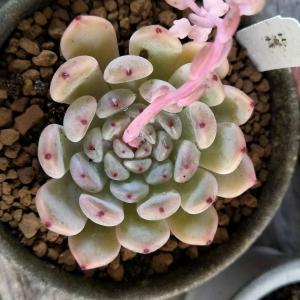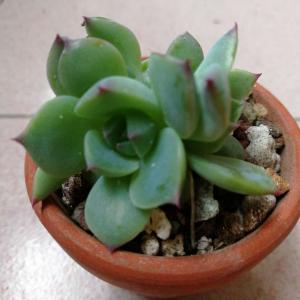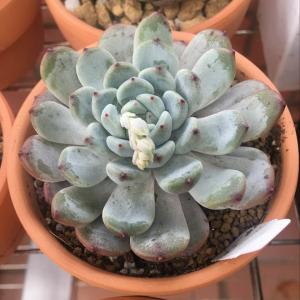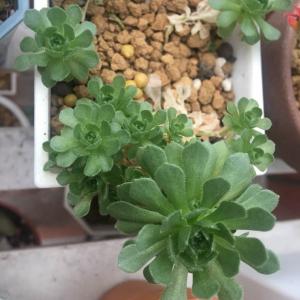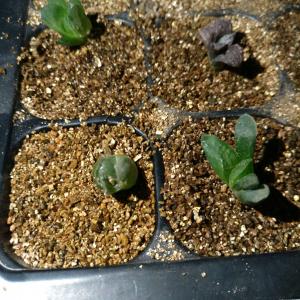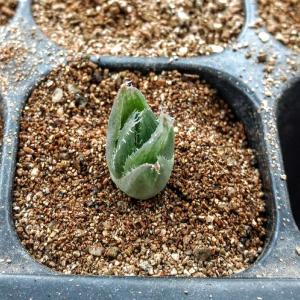文章
Miss Chen
2018年03月02日

Description: This wildflower is an herbaceous perennial about 1½-3' tall that branches divergently. The stems are light green to red, glabrous, and terete. Pairs of opposite leaves occur along these stems; they are 1½-4" long and ¾-2" across. Individual leaves are oblong-lanceolate to oblong-ovate, pinnately veined, and smooth along their margins. The upper leaf surface is medium green and glabrous, while the lower surface is pale green and either hairless or pubescent. The slender petioles are about ¼" in length and light green to red. Generally, the leaves are widely spreading or they have a tendency to droop along the stems. Both the stems and leaves contain milky juice.
The slightly nodding flowers are produced in terminal cymes (flat-headed panicles) spanning 1-4" across. Individual flowers are about 1/3" (8-9 mm.) long and about the same length across; each flower has a white to pink bell-shaped corolla with 5 spreading to recurved lobes, a small light green calyx with 5 teeth, 5 stamens, and 2 pistils. The stamens form a cone over the merged stigmata of the pistils. There are also 5 nectaries between the bases of the stamens. The interior of the corolla has 5 thick pink stripes that lead to the nectaries. The peduncles and pedicels of the cymes are light green to red and glabrous; individual pedicels are less than 1/3" long. The blooming period occurs during the summer for 1-2 months. There is a sweet floral fragrance. Flowers that have been successfully cross-pollinatedDistribution Map produce follicles in pairs. Each follicle is 3-6" long and narrowly cylindrical, tapering gradually to a point. At maturity, it splits open along one side to release small seeds with tufts of hair. The seeds are distributed by the wind. The root system is rhizomatous.
Cultivation: The preference is partial sun, mesic to dry conditions, and a somewhat barren soil that is sandy or rocky. Spreading Dogbane tolerates other kinds of habitats, but it tends to be less competitive with other plants.
Range & Habitat: The native Spreading Dogbane is occasional in most areas of the state; it is slightly more common in the northern section of the state than elsewhere. Habitats include upland prairies, sand prairies, sandy savannas, stabilized sand dunes near Lake Michigan, thin sandy woodlands, thinly wooded rocky bluffs, and abandoned sandy fields. Spreading Dogbane tends to be particularly common in areas that are burned over from wildfires. In wooded areas, it is typically found in association with oak trees.
Faunal Associations: The flowers are cross-pollinated primarily by small bees (particularly Halictid bees) and miscellaneous flies. The floral reward of these visitors is nectar. Other insects feed on the foliage, plant juices, and other parts of Spreading Dogbane. These species include Chrysochus auratus (Dogbane Beetle) and Tetraopes tetrophthalmus (Red Milkweed Beetle); they also include caterpillars of the moths Cycnia oregonensis (Oregon Cycnia), Cycnia tenera (Delicate Cycnia), Papaipema baptisiae (Wild Indigo Borer Moth), and Spargaloma sexpunctata (Six-Spotted Gray). Hottes & Frison (1931) observed the following aphids feeding on one or more Apocynum spp. (Dogbanes): Aphis asclepiadis, Aphis citricola, and Macrosiphum gei. The last two aphid species are highly polyphagous. Because the white latex of the foliage is acrid and toxic, mammalian herbivores rarely bother Spreading Dogbane.
Photographic Location: A stabilized sand dune near Lake Michigan at Indiana Dunes State Park in NW Indiana. The dominant vegetation of this sand dune consisted of oak trees.

Comments: Spreading Dogbane is a rather lanky plant with small fragrant flowers. It is less aggressive (at least in Illinois) than the closely related Apocynum cannabinum (Common Dogbane). This latter plant refers wetter habitats than Spreading Dogbane. These two species are similar to each other in appearance, but Spreading Dogbane can be distinguished as follows: 1) it tends to be a shorter and more widely spreading plant than Common Dogbane, 2) its flowers are slightly larger in size and the lobes of its corollas are more widely spreading or recurved, and 3) its flowers have conspicuous pink stripes along the sides of the corolla's interior.
The slightly nodding flowers are produced in terminal cymes (flat-headed panicles) spanning 1-4" across. Individual flowers are about 1/3" (8-9 mm.) long and about the same length across; each flower has a white to pink bell-shaped corolla with 5 spreading to recurved lobes, a small light green calyx with 5 teeth, 5 stamens, and 2 pistils. The stamens form a cone over the merged stigmata of the pistils. There are also 5 nectaries between the bases of the stamens. The interior of the corolla has 5 thick pink stripes that lead to the nectaries. The peduncles and pedicels of the cymes are light green to red and glabrous; individual pedicels are less than 1/3" long. The blooming period occurs during the summer for 1-2 months. There is a sweet floral fragrance. Flowers that have been successfully cross-pollinatedDistribution Map produce follicles in pairs. Each follicle is 3-6" long and narrowly cylindrical, tapering gradually to a point. At maturity, it splits open along one side to release small seeds with tufts of hair. The seeds are distributed by the wind. The root system is rhizomatous.
Cultivation: The preference is partial sun, mesic to dry conditions, and a somewhat barren soil that is sandy or rocky. Spreading Dogbane tolerates other kinds of habitats, but it tends to be less competitive with other plants.
Range & Habitat: The native Spreading Dogbane is occasional in most areas of the state; it is slightly more common in the northern section of the state than elsewhere. Habitats include upland prairies, sand prairies, sandy savannas, stabilized sand dunes near Lake Michigan, thin sandy woodlands, thinly wooded rocky bluffs, and abandoned sandy fields. Spreading Dogbane tends to be particularly common in areas that are burned over from wildfires. In wooded areas, it is typically found in association with oak trees.
Faunal Associations: The flowers are cross-pollinated primarily by small bees (particularly Halictid bees) and miscellaneous flies. The floral reward of these visitors is nectar. Other insects feed on the foliage, plant juices, and other parts of Spreading Dogbane. These species include Chrysochus auratus (Dogbane Beetle) and Tetraopes tetrophthalmus (Red Milkweed Beetle); they also include caterpillars of the moths Cycnia oregonensis (Oregon Cycnia), Cycnia tenera (Delicate Cycnia), Papaipema baptisiae (Wild Indigo Borer Moth), and Spargaloma sexpunctata (Six-Spotted Gray). Hottes & Frison (1931) observed the following aphids feeding on one or more Apocynum spp. (Dogbanes): Aphis asclepiadis, Aphis citricola, and Macrosiphum gei. The last two aphid species are highly polyphagous. Because the white latex of the foliage is acrid and toxic, mammalian herbivores rarely bother Spreading Dogbane.
Photographic Location: A stabilized sand dune near Lake Michigan at Indiana Dunes State Park in NW Indiana. The dominant vegetation of this sand dune consisted of oak trees.

Comments: Spreading Dogbane is a rather lanky plant with small fragrant flowers. It is less aggressive (at least in Illinois) than the closely related Apocynum cannabinum (Common Dogbane). This latter plant refers wetter habitats than Spreading Dogbane. These two species are similar to each other in appearance, but Spreading Dogbane can be distinguished as follows: 1) it tends to be a shorter and more widely spreading plant than Common Dogbane, 2) its flowers are slightly larger in size and the lobes of its corollas are more widely spreading or recurved, and 3) its flowers have conspicuous pink stripes along the sides of the corolla's interior.
0
0
文章
Miss Chen
2018年03月02日

Description: This perennial plant is about 1-2½' tall. The stems have scattered white hairs and there is little branching, except for the production of long stalks for the flowers. The leaves occur in 1 or 2 whorls along the stem, usually in groups of 2 or 3. They are up to 5" long and across, and have long petioles with scattered white hairs. Each major leaf is divided into 2 or 3 deep lobes, which are in turn divided into 2 or 3 shallower lobes. Because these divisions are rather sharp, the leaves are cleft. Furthermore, the margins are coarsely serrate or dentate. The leaves are often light green or yellowish green in bright sunlight.
From the upper axil of each leaf, there occasionally develops a long stalk with a single flower about ¾" across when it is fully open. This flower consists of 5 white or greenish white sepals (looking like petals), and numerous stamens with yellow or light brown anthers surrounding a compound head of pistils. This pistillate head is green and prickly in appearance. This compound head becomes larger and more elongated as the sepals fall off. It is about ¾–1" long and up to ½" across, eventually turning into a fluffy mass with numerous dark seeds. These seeds are eventually distributed by the wind. The root system is rhizomatous, often producing vegetative offsets from the mother plant. Tall Anemone produces an allelopathic substance, protoanemonin, which inhibits seed germination and seedling growth in many species of plants.

Cultivation: The preference is light shade to full sun. The soil should contain loam with some organic material to retain moisture. Mature plants resist drought fairly well, and the leaves are not often subject to foliar disease.
Range & Habitat: The native Tall Anemone is a fairly common plant that occurs throughout Illinois, except for a few southern counties (see Distribution Map). Habitats include moist to mesic black soil prairies, savannas, open woodlands, woodland borders, thickets, and limestone glades. It usually doesn't stray far from wooded areas.

Faunal Associations: Small bees and flower flies visit the flowers occasionally for pollen. Bee visitors include Plasterer bees (Colletes spp.) and Halictid bees (Halictus spp., Lasioglossum spp., etc.). Mammalian herbivores usually leave this plant alone because the foliage contains a blistering agent that can irritate the mouth parts and digestive tract. When this plant forms colonies, it provides a minor source of cover for small animals.
Photographic Location: Photographs were taken at Meadowbrook Park in Urbana, Illinois.

Comments: This curious plant offers different attractions at different times of the year. During early summer, white flowers are produced, which are soon replaced by long-lasting thimble-shaped seedheads. During the fall, these seedheads slowly distintegrate into white cottony masses that remain attractive all winter. Tall Anemone can be easily distinguished from Anemone canadensis (Canada Anemone) because its leaves have conspicuous petioles, while the leaves of the latter species are sessile or perfoliate. Distinguishing Tall Anemone from Anemone cylindrica (Thimbleweed) is a bit trickier, but examination of the following characteristics are helpful: 1) the former species has a shorter, more prickly central head that is greater than 1/3" across, while the latter has a central head that is 1/3" across or less and is at least twice as long as it is wide; 2) the leaves of the former species are sharply tripartite (cleft) and have sharper dentation or serration along the margins, while the leaves of the latter are more likely to be palmate and less cleft and more blunt and fewer teeth along the margins.
From the upper axil of each leaf, there occasionally develops a long stalk with a single flower about ¾" across when it is fully open. This flower consists of 5 white or greenish white sepals (looking like petals), and numerous stamens with yellow or light brown anthers surrounding a compound head of pistils. This pistillate head is green and prickly in appearance. This compound head becomes larger and more elongated as the sepals fall off. It is about ¾–1" long and up to ½" across, eventually turning into a fluffy mass with numerous dark seeds. These seeds are eventually distributed by the wind. The root system is rhizomatous, often producing vegetative offsets from the mother plant. Tall Anemone produces an allelopathic substance, protoanemonin, which inhibits seed germination and seedling growth in many species of plants.

Cultivation: The preference is light shade to full sun. The soil should contain loam with some organic material to retain moisture. Mature plants resist drought fairly well, and the leaves are not often subject to foliar disease.
Range & Habitat: The native Tall Anemone is a fairly common plant that occurs throughout Illinois, except for a few southern counties (see Distribution Map). Habitats include moist to mesic black soil prairies, savannas, open woodlands, woodland borders, thickets, and limestone glades. It usually doesn't stray far from wooded areas.

Faunal Associations: Small bees and flower flies visit the flowers occasionally for pollen. Bee visitors include Plasterer bees (Colletes spp.) and Halictid bees (Halictus spp., Lasioglossum spp., etc.). Mammalian herbivores usually leave this plant alone because the foliage contains a blistering agent that can irritate the mouth parts and digestive tract. When this plant forms colonies, it provides a minor source of cover for small animals.
Photographic Location: Photographs were taken at Meadowbrook Park in Urbana, Illinois.

Comments: This curious plant offers different attractions at different times of the year. During early summer, white flowers are produced, which are soon replaced by long-lasting thimble-shaped seedheads. During the fall, these seedheads slowly distintegrate into white cottony masses that remain attractive all winter. Tall Anemone can be easily distinguished from Anemone canadensis (Canada Anemone) because its leaves have conspicuous petioles, while the leaves of the latter species are sessile or perfoliate. Distinguishing Tall Anemone from Anemone cylindrica (Thimbleweed) is a bit trickier, but examination of the following characteristics are helpful: 1) the former species has a shorter, more prickly central head that is greater than 1/3" across, while the latter has a central head that is 1/3" across or less and is at least twice as long as it is wide; 2) the leaves of the former species are sharply tripartite (cleft) and have sharper dentation or serration along the margins, while the leaves of the latter are more likely to be palmate and less cleft and more blunt and fewer teeth along the margins.
0
0
成长记
周宏艳
2018年03月01日

三月的第1天,晚上10点,第一朵小花盛开了,白色的花瓣,黄色的花蕊,低调不张扬,可我忘了闻花香了。我把盆里的水全倒了,期待明天会有更多的花苞~


0
0
刘猛:很漂亮
文章
Miss Chen
2018年03月01日

Description: This plant is a herbaceous perennial that becomes 1¼–2½' tall when it flowers. The central stem is light green, terete, sparsely hairy, and unbranched. Alternate compound leaves occur primarily along the lower one-half of this stem; they are odd-pinnate with 3-9 primary leaflets (usually about 5). In addition to the primary leaflets, there is usually a single pair of secondary leaflets on each compound leaf; these secondary leaflets are much smaller in size. Successive pairs of primary leaflets become gradually larger in size, while the terminal primary leaflet is the largest in size, for each compound leaf. The terminal primary leaflets are 2–3½" long and 1¼–2" across; all primary leaflets are obovate to broadly ellipsoid in shape, while their margins are coarsely dentate-crenate. The secondary leaflets are less than ½" long and lanceolate to elliptic in shape. All of the leaflets are sessile.
The upper leaflet surface is medium green or yellowish green and hairless (or nearly so), while the lower leaflet surface is light or whitish green and sparsely hairy along the undersides of primary veins. In addition, the lower leaflet surface usually has minute glandular hairs that can glisten in bright sunlight (a 10x hand lens may be necessary to see them). The petioles and rachises of the compound leaves are light green and sparsely hairy; they are flat or finely grooved along their upper surfaces, while their lower surfaces are convex. Pairs of stipules up to 1" long occur at the petiole bases of compound leaves. These stipules are either unlobed and lanceolate in shape, or they are divided into 2-3 lanceolate lobes. The central stem terminates in either an unbranched raceme or sparingly branched racemes of flowers. The racemes are spike-like in appearance and they are ½–1¼' long. If lateral racemes are present, they are shorter than the central raceme. The flowers are distributed alternately along each raceme. Each flower is about ¼" across or slightly larger in size, consisting of 5 yellow petals, 5 green sepals, 5-15 stamens, and a burry green hypanthium containing a pair of carpels (female reproductive organs). The rachis of each raceme is light to medium green, terete, sparsely hairy below, and short glandular-hairy above. The pedicels of the flowers are short (less than ¼" long).

The blooming period occurs from mid-summer to early autumn, lasting about 3 weeks. There is no noticeable floral scent. The burry fruits (mature hypanthia) are 3-4 mm. long and slightly less across; they are obconic-hemispheric below, tapering to a knobby apex above. Around the middle of each fruit, there are 2-3 rows of hooked spines that are widely spreading to ascending (mainly the latter). The obconic-hemispheric section of the fruit may have shallow longitudinal grooves, or such grooves may be lacking. The entire fruit is covered with very short glandular hairs. These fruits usually nod or hang downward from their pedicels. Each fruit contains are pair of seeds. The root system is fibrous, occasionally forming narrow spindle-shaped tubers.
Cultivation: The preference is partial sun to light shade, mesic to dry-mesic conditions, and soil containing loam, clay-loam, glacial till, or rocky material.
Range & Habitat: The native Woodland Agrimony is occasional in the southern half of Illinois and NE Illinois, while in the rest of the state it is uncommon or absent (see Distribution Map). Habitats include upland woodlands, upland savannas, rocky bluffs, and openings in upland woodlands. This plant is found in higher quality natural areas.

Faunal Associations: The flowers are cross-pollinated by Halictid bees, other small bees, Syrphid flies, and other flies. Insects that feed destructively on species of Agrimony (Agrimonia spp.) include the aphids Macrosiphum agrimoniellum and Macrosiphum pallidum, larvae of the gall fly Contarinia agrimoniae, larvae of the sawfly Fenella nigrita, and larvae of the moths Anacampsis agrimoniella and Coptotriche agrimoniella (Blackman & Eastop, 2013; Felt, 1917; Smith, 2006; Covell, 1984/2005; Microleps website, 2010). There is some evidence that White-tailed Deer browse on Woodland Agrimony (Agrimonia rostellata), reducing its abundance in wooded areas (Dávalos et al., 2014). The burry fruits can cling to the fur of mammals (cattle, sheep, deer), feathers of birds, and clothing of people, spreading the seeds to new areas.
Photographic Location: An opening in an upland woodland at Merwin Nature Preserve in McLain County, Illinois.

Comments: The different species of Agrimony (Agrimonia spp.) all have spike-like racemes of small yellow flowers and compound leaves that are odd-pinnate. Their compound leaves are unusual in having smaller secondary leaflets interspersed between the larger primary leaflets. Because they are similar in appearance, different species of Agrimony can be difficult to identify. Woodland Agrimony (Agrimonia rostellata) can be distinguished from these other species of Agrimony by examining its fruits: 1) its burry fruits tend to be smaller in size (3-4 mm. long), 2) they have fewer bristles that are spreading to ascending, and 3) they are more hemispheric below and develop a knob-like beak above, rather than being obconic below and with a more tapered beak above. In addition to its fruits, Woodland Agrimony can be distinguished from some species of Agrimony by the short glandular hairs on its floral stalks, the scarcity of secondary leaflets on its compound leaves, the presence of minute glandular hairs on the lower sides of its leaflets (this can be difficult to see), and its greater tendency to develop branching racemes of flowers. Overall, Woodland Agrimony tends to be less robust and smaller in size than other species of Agrimony within the state.
The upper leaflet surface is medium green or yellowish green and hairless (or nearly so), while the lower leaflet surface is light or whitish green and sparsely hairy along the undersides of primary veins. In addition, the lower leaflet surface usually has minute glandular hairs that can glisten in bright sunlight (a 10x hand lens may be necessary to see them). The petioles and rachises of the compound leaves are light green and sparsely hairy; they are flat or finely grooved along their upper surfaces, while their lower surfaces are convex. Pairs of stipules up to 1" long occur at the petiole bases of compound leaves. These stipules are either unlobed and lanceolate in shape, or they are divided into 2-3 lanceolate lobes. The central stem terminates in either an unbranched raceme or sparingly branched racemes of flowers. The racemes are spike-like in appearance and they are ½–1¼' long. If lateral racemes are present, they are shorter than the central raceme. The flowers are distributed alternately along each raceme. Each flower is about ¼" across or slightly larger in size, consisting of 5 yellow petals, 5 green sepals, 5-15 stamens, and a burry green hypanthium containing a pair of carpels (female reproductive organs). The rachis of each raceme is light to medium green, terete, sparsely hairy below, and short glandular-hairy above. The pedicels of the flowers are short (less than ¼" long).

The blooming period occurs from mid-summer to early autumn, lasting about 3 weeks. There is no noticeable floral scent. The burry fruits (mature hypanthia) are 3-4 mm. long and slightly less across; they are obconic-hemispheric below, tapering to a knobby apex above. Around the middle of each fruit, there are 2-3 rows of hooked spines that are widely spreading to ascending (mainly the latter). The obconic-hemispheric section of the fruit may have shallow longitudinal grooves, or such grooves may be lacking. The entire fruit is covered with very short glandular hairs. These fruits usually nod or hang downward from their pedicels. Each fruit contains are pair of seeds. The root system is fibrous, occasionally forming narrow spindle-shaped tubers.
Cultivation: The preference is partial sun to light shade, mesic to dry-mesic conditions, and soil containing loam, clay-loam, glacial till, or rocky material.
Range & Habitat: The native Woodland Agrimony is occasional in the southern half of Illinois and NE Illinois, while in the rest of the state it is uncommon or absent (see Distribution Map). Habitats include upland woodlands, upland savannas, rocky bluffs, and openings in upland woodlands. This plant is found in higher quality natural areas.

Faunal Associations: The flowers are cross-pollinated by Halictid bees, other small bees, Syrphid flies, and other flies. Insects that feed destructively on species of Agrimony (Agrimonia spp.) include the aphids Macrosiphum agrimoniellum and Macrosiphum pallidum, larvae of the gall fly Contarinia agrimoniae, larvae of the sawfly Fenella nigrita, and larvae of the moths Anacampsis agrimoniella and Coptotriche agrimoniella (Blackman & Eastop, 2013; Felt, 1917; Smith, 2006; Covell, 1984/2005; Microleps website, 2010). There is some evidence that White-tailed Deer browse on Woodland Agrimony (Agrimonia rostellata), reducing its abundance in wooded areas (Dávalos et al., 2014). The burry fruits can cling to the fur of mammals (cattle, sheep, deer), feathers of birds, and clothing of people, spreading the seeds to new areas.
Photographic Location: An opening in an upland woodland at Merwin Nature Preserve in McLain County, Illinois.

Comments: The different species of Agrimony (Agrimonia spp.) all have spike-like racemes of small yellow flowers and compound leaves that are odd-pinnate. Their compound leaves are unusual in having smaller secondary leaflets interspersed between the larger primary leaflets. Because they are similar in appearance, different species of Agrimony can be difficult to identify. Woodland Agrimony (Agrimonia rostellata) can be distinguished from these other species of Agrimony by examining its fruits: 1) its burry fruits tend to be smaller in size (3-4 mm. long), 2) they have fewer bristles that are spreading to ascending, and 3) they are more hemispheric below and develop a knob-like beak above, rather than being obconic below and with a more tapered beak above. In addition to its fruits, Woodland Agrimony can be distinguished from some species of Agrimony by the short glandular hairs on its floral stalks, the scarcity of secondary leaflets on its compound leaves, the presence of minute glandular hairs on the lower sides of its leaflets (this can be difficult to see), and its greater tendency to develop branching racemes of flowers. Overall, Woodland Agrimony tends to be less robust and smaller in size than other species of Agrimony within the state.
0
0
文章
Miss Chen
2018年03月01日

Description: This herbaceous perennial plant is about 1½–2½' tall and unbranched or sparingly so. The lower central stem has long ascending hairs and short pubescent hairs, while the upper stem(s) has only short pubescent hairs; this stem (or stems) is terete (round in cross-section) and rather stout. The alternate leaves are odd-pinnate with 5-9 primary leaflets. Between adjacent pairs of primary leaflets, there is a single pair of secondary leaflets along the stalk (or rachis) of each compound leaf. The primary leaflets are up to 3" long and 1½" across; they are ovate, oval-ovate, or oblong-ovate in shape. The upper surface of each primary leaflet is dull green, hairless, and conspicuously veined; its margins are coarsely toothed. The lower surface of each primary leaflet is whitish green and pubescent. The secondary leaflets are much smaller in size than the primary leaflets, otherwise they share many of the same characteristics. The stalk (or rachis) of each compound leaf is light green and pubescent or hairy. At the base of each compound leaf, there is a pair of leafy stipules about 2/3" (16 mm.) long. The stipules are coarsely toothed or cleft with pointed lobes. The upper stem(s) terminates in a spike-like raceme of flowers up to 1' long. The flowers are sparsely distributed along the stalk of the raceme. Normally, this raceme is straight and erect, but sometimes it leans over to one side or curves slightly. The stalk of the raceme is covered with short pubescent hairs. Each flower is up to 1/3" (8 mm.) across; it has 5 yellow petals, 5 green sepals, and about 10 stamens. The petals are oblong in shape and spread outward while the flower is in bloom.
The blooming period occurs from mid-summer to early fall and lasts about 1 month. Each flower is replaced by a green fruit that is broadly conical toward the bottom and pointed-turbinate toward the top. Along the upper rim of each fruit, there is a fringe of short hooked prickles. The fruits turn brown when they become mature. The root system is rhizomatous and fibrous.
Cultivation: The preference is partial sun, moist to dry conditions, and a reasonably fertile soil containing some loam.
Range & Habitat: The native Downy Agrimony is occasional to locally common in central and northern Illinois, but it is less common or absent in southern Illinois (see Distribution Map). Habitats include open deciduous woodlands, savannas, thickets, small meadows in wooded areas, areas along woodland paths, and powerline clearances in wooded areas. Disturbance is beneficial if it reduces excessive shade from trees and other woody vegetation.

Faunal Associations: Little information is currently available about floral-faunal relationships for this species. According to Robertson (1929), Halictid bees collect pollen or suck nectar from the flowers. The hooked bristles of the fruits can cling to the fur of animals, the feathers of birds, or the clothing of humans. In this manner, the seeds can be transported for considerable distances.
Photographic Location: A powerline clearance at Busey Woods in Urbana, Illinois.
Comments: Downy Agrimony is one of several Agrimonia spp. in Illinois. It can be distinguished from these other species by the short pubescent hairs on the stalks of its racemes; the other species have floral stalks that are long hairy or hairless. The leaves and leaflets of these Agrimonia spp. are rather similar to each other, except for Agrimonia parviflora (Swamp Agrimony). This latter species has more primary leaflets per compound leaf (about 11-17) and its primary leaflets are more narrow in shape. Swamp Agrimony prefers habitats that are more moist and sunny than other Agrimonia spp. in Illinois. Agrimony species are easily distinguished from other plants by the small secondary leaflets on their compound leaves; other plants with pinnate leaves typically lack such leaflets. Another common name of Agrimonia pubescens is Soft Agrimony.
The blooming period occurs from mid-summer to early fall and lasts about 1 month. Each flower is replaced by a green fruit that is broadly conical toward the bottom and pointed-turbinate toward the top. Along the upper rim of each fruit, there is a fringe of short hooked prickles. The fruits turn brown when they become mature. The root system is rhizomatous and fibrous.
Cultivation: The preference is partial sun, moist to dry conditions, and a reasonably fertile soil containing some loam.
Range & Habitat: The native Downy Agrimony is occasional to locally common in central and northern Illinois, but it is less common or absent in southern Illinois (see Distribution Map). Habitats include open deciduous woodlands, savannas, thickets, small meadows in wooded areas, areas along woodland paths, and powerline clearances in wooded areas. Disturbance is beneficial if it reduces excessive shade from trees and other woody vegetation.

Faunal Associations: Little information is currently available about floral-faunal relationships for this species. According to Robertson (1929), Halictid bees collect pollen or suck nectar from the flowers. The hooked bristles of the fruits can cling to the fur of animals, the feathers of birds, or the clothing of humans. In this manner, the seeds can be transported for considerable distances.
Photographic Location: A powerline clearance at Busey Woods in Urbana, Illinois.
Comments: Downy Agrimony is one of several Agrimonia spp. in Illinois. It can be distinguished from these other species by the short pubescent hairs on the stalks of its racemes; the other species have floral stalks that are long hairy or hairless. The leaves and leaflets of these Agrimonia spp. are rather similar to each other, except for Agrimonia parviflora (Swamp Agrimony). This latter species has more primary leaflets per compound leaf (about 11-17) and its primary leaflets are more narrow in shape. Swamp Agrimony prefers habitats that are more moist and sunny than other Agrimonia spp. in Illinois. Agrimony species are easily distinguished from other plants by the small secondary leaflets on their compound leaves; other plants with pinnate leaves typically lack such leaflets. Another common name of Agrimonia pubescens is Soft Agrimony.
0
0




